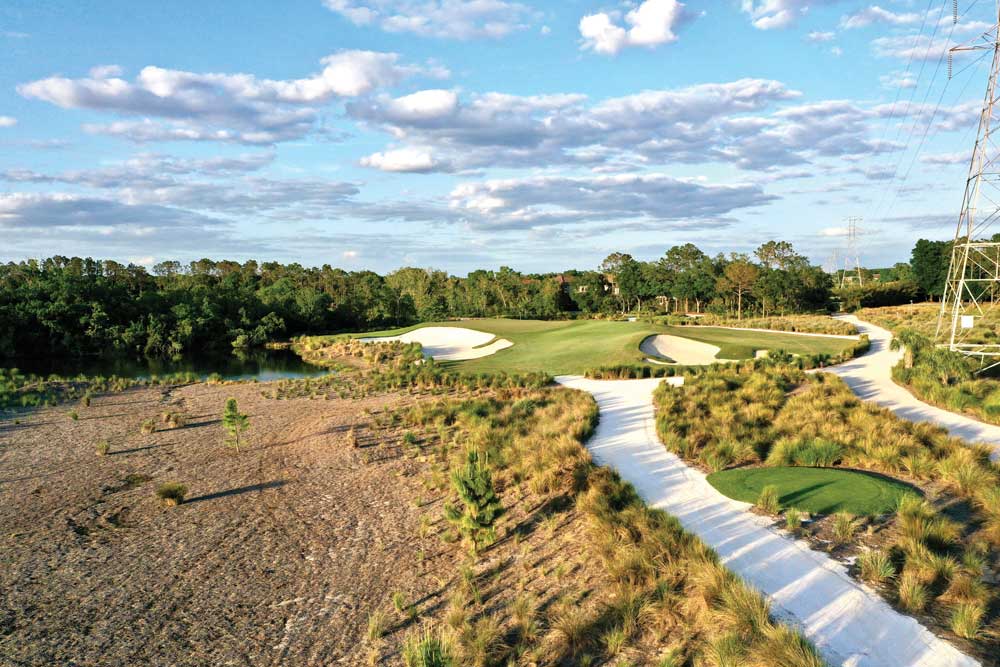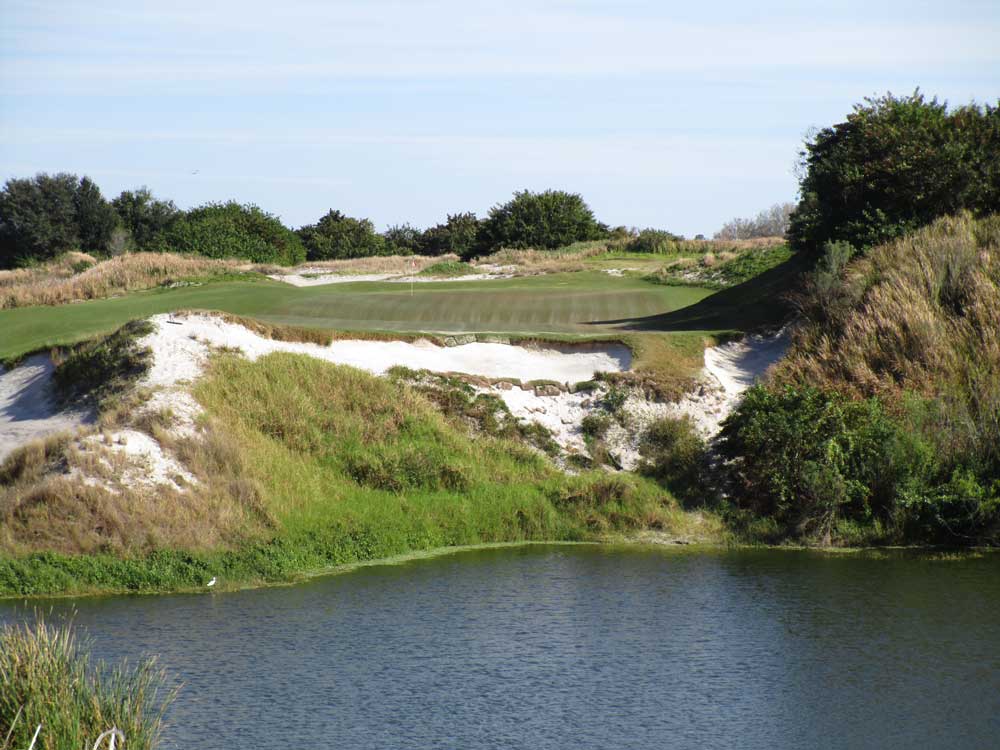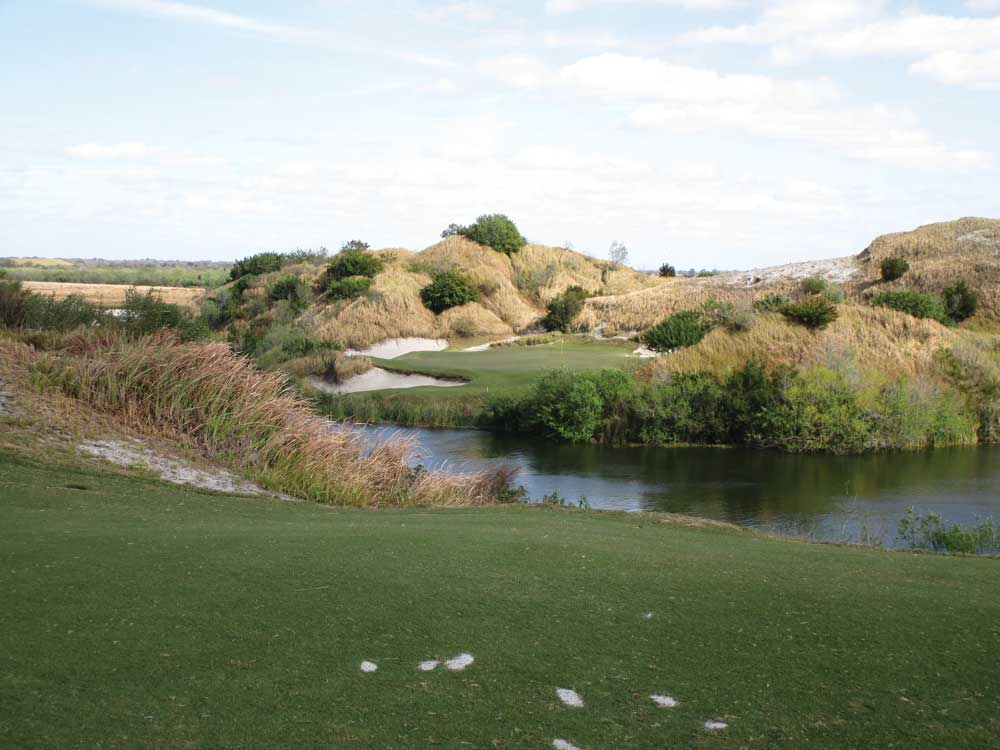Something a little different for this month: with snow blanketing the northern half of the country Your Intrepid Author has been sharpening his ski edges for places like Sugarloaf and Sun Valley. But a great many of you will be headed for warmer climes, seeking fairways and greens. So let’s take a tour of some of the best escapes for northerners seeking to stay sharp during what, for them, can be a long, cold offseason.
ALLIGATOR ALLEY – TUESDAY MORNING, 1:42 a.m.
I’ve traveled a lot of middle-of-the-night miles in my life chasing the next great golf course, but few miles were darker, lonelier, and more forlorn than my four hours, moonlit trek across Florida’s Everglades as I made my way to meet golf architect Steve Smyers for a sunrise tee time at his latest smash hit that been rocketing up the golf charts: Old Memorial Golf Club.

You see my flight to Tampa/St. Pete got re-routed to Fort Lauderdale instead, all the way across the state. It landed at midnight (I worked a full day in the law office that morning) and I was in the rental car at 12:40, but still pulled into the club parking lot outside St. Pete at about 5:30 a.m.
It’s rarely a good idea to play golf with no sleep, even if it’s a coffee/drive all-nighter instead of some raging bender. But it’s even more difficult when you’re playing Old Memorial, a course as intricate and complex as a New York Times crossword puzzle.
Old Memorial is the new Haute course among the golf cognoscente. Fiendishly bunkered, cunningly angled, and peppered with rumples in the fairways, Old Memorial sees a regular diet of top-class amateurs, professionals, and well-heeled golfers in the know when it comes to travel and architecture. Architect Steve Smyers, one of the most cheerful and soft-spoken gentlemen you’ll ever be delighted to meet is also a first-rate player: a 1973 NCAA Champion along with the rest of his Florida Gator teammates and a runner-up in both the Coleman and the Anderson – the crème de la crème of amateur tournaments.
“That Florida team won not because of me, but I was a pretty good social director for the guys,” Smyers aw-shucked.
So Old Memorial is meant to be a stern test to the elite player; happily, Smyers is an expert in knowing how elite players think and hit the ball. He’s also the designer of the Evian Masters course in Europe and the Isleworth Country Club in Florida, home to a great many of the Tour pros.
“The way the elite player thinks is totally different from the romantic concept of golf course design. The elite player plays for percentages, so we set the course up for the percentage player – not the aggressive player – to succeed on that golf course. We tempt and entice you to take on a hazard but if you have the discipline to shoot AWAY FROM THEIR TARGET, then we allow the margin for error to be the greatest at that point., but if you challenge a tough hole location or drive over too much of a hazard and fail then your short-sided or worse. Patience is key. The older players beat the hell out of the outer lids on this 7100-yard golf course.
STREAMSONG RESORT (BLUE AND RED) – WEDNESDAY-THURSDAY
As you approach the Streamsong Resort hotel – stern, stark, and stoic as a James Bond villain’s Headquarters of Doom – you have to ask yourself two questions:
- How did I not know there was an ocean of sand in the middle of central Florida?; and
- How quickly can I come back, because this is the heartbeat of the Second Golden Age of Golf Course Architecture?
Once again, it’s the Kaiser family, finger pressed firmly on the zeitgeist of modern golf design. Across over 500 acres of phosphate and sand, remnants of the now-defunct Mosaic Company (once one of the largest suppliers of phosphate in America), Kaiser assembled first Tom Doak (Blue Course) and the tandem of Coore and Crenshaw (Red Course) and shortly thereafter Gil Hanse (Black Course) and left them to constantly endeavor to one-up each other.

The results are stratospheric, all three courses rocketing up the rankings of every major magazine public access list. Built on the same model as Bandon Dunes and Sand Valley – “if you build a golf field of dreams, they will come…no matter how remote” – with blown-out bunkers, uneven lies in every fairway, random bunkering, and towering dunes almost 200 feet high in places, all three courses feel eminently natural, and hearken back to the storied links of the UK and Ireland.
Related: Superintendents Winter Time Chores
“When Bill Coore and I were walking the property, I thought to myself that Florida would be my 47th guess as to where we were,” admitted Blue course architect Tom Doak in an earlier interview, and he’s right. Streamsong looks like the Serengeti plateau at times. But Florida? Thank goodness, no.
Doak estimated that 12 million cubic yards of earth were moved to build the Red and Blue courses, a surprisingly large amount for minimalists like him and Bill and Ben. But their greatest success is in making the courses look natural. If you didn’t know better, you’d think they’d just gone out and out in the stakes for the tee boxes and the greens and then cut out the bunkers and opened for play. With winds whipping across the treeless landscape at upwards of 40 miles an hour, yardages on the scorecard are useless. Trust your caddie, and stay out of the bunkers.

WORLD WOODS GOLF CLUB (PINE BARRENS AND ROLLING OAKS) FRIDAY- SATURDAY
With The exception of Monterey Peninsula Country Club’s Dunes Course (which we wrote about here: https://www.golfcoursetrades.com/california-dreamin-at-monterey-peninsula-country-club/), World Woods’ Pine Barrens Course maybe Tom Fazio’s best design: not so much because he tried to copy fabled Pine Valley, but because there are more strategic angles and challenges here than at almost any other Fazio course anywhere.
Rather than simply copying the holes at Pine Valley, Fazio emulated their ebb, flow, and general themes, placing them naturally where they would occur on the property. Excellent diagonal hazards, terrific green undulations, plenty of width to drive the ball, and intricately defended greens with sweeping bunkers of the grandest scale result in a course you’ll want to play over and over. This is great because their 36-hole stay and play package in conjunction with the nearby Plantation Inn is one of the best bargains in winter golf. Over the course of two days, I’ll play Pine Barrens three times and the companion course, Rolling Oaks once. And on both days, I’ll be sure to warm up at their three-hole practice course featuring a full-length par-4, par-5, and par-3.
The par-5s at four and 15 are the showstoppers, the former due to its cavernous bunkering, the latter due to its serpentine fairway snaking through the sandy scrub, but the gorgeous and varied par-3s are also among Fazio’s strongest collections.
39 holes of golf, a good lunch, a Jacuzzi, Italian food in the hotel restaurant, and comfortable digs at a price you can’t beat with a stick…that’s World Woods. The facility was groundbreaking when it opened in 1990 and is still a high watermark ion the modern craft, not to be missed by those who want to see Tom Fazio’s work at its strategic zenith.

SUNDAY – 5:52 PM
The long drive back across the state made me shake my head more than once. I passed some old friends on the way home I’d have loved to have visited that have to wait until next time. But I did get a few hours on a boat in the ocean soaking up the sun and cooking fish. Call it a deep breath before the plunge back into the cold northeast. But that’s okay…I’m a skier as well as a golfer, and to a skier, every snowstorm’s a party.
TO BE CONTINUED…
When not reporting live from major sports championships or researching golf courses for design, value, and excitement, multiple award-winning sportswriter Jay Flemma is an entertainment, Internet, trademark, and banking lawyer from New York. His clients have been nominated for Grammy and Emmy awards, won a Sundance Film Festival Best Director award, performed on stage and screen, and designed pop art for museums and collectors. Twitter @JayGolfUSA



























